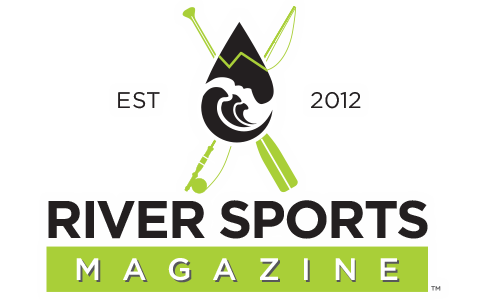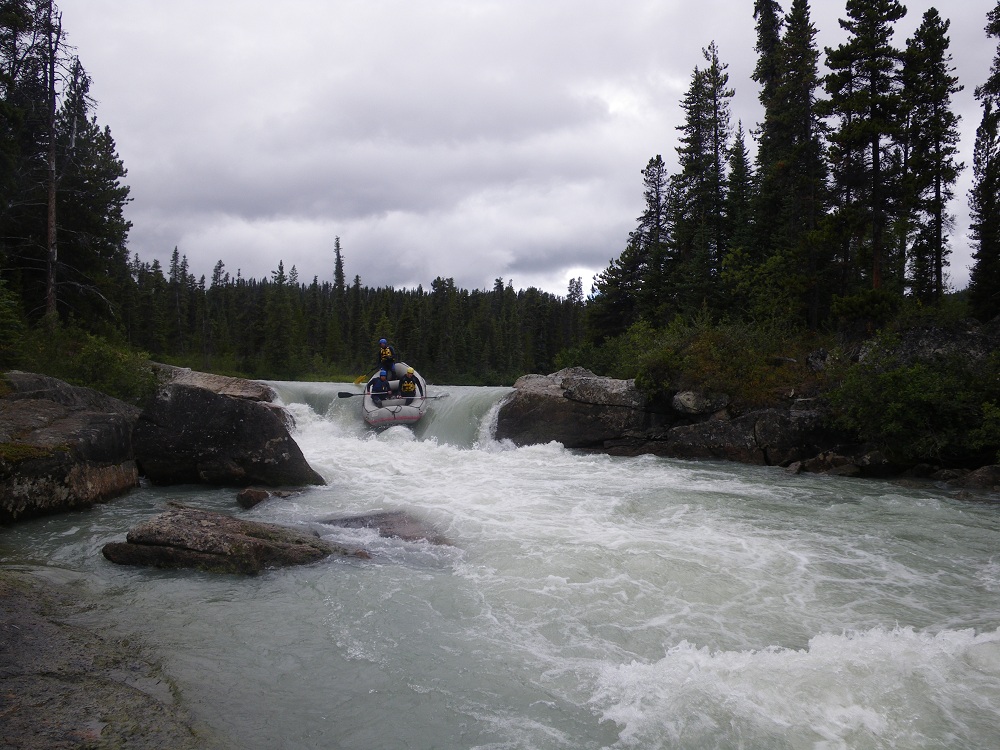So, you want to raft a river, but how do you know where to start? What should you be prepared for on the water? Should you go with an experienced guide? To help you know where to start, here’s some background on rafting, rafting tips, commonly asked questions, and resources for beginners.
Some of the links in this article may contain affiliate links. When you make a purchase using these links, we receive a small commission at no extra cost to you. Additionally, as an Amazon Associate, we earn from qualifying purchases. Please see our disclosure for more details.
A Brief History of Whitewater Rafting
Rafting has been around for hundreds of years. Not only was rafting used for traveling, but it was also used to transport goods.
Some of the first rafts built were made from logs, tied together by natural materials such as vines.
Another raft called a keelboat was steered by ores and propelled by ores or paddles. Occasionally they were fitted with sails. These were mainly passenger boats.
Today rafts are mainly made out of synthetic materials but are still propelled by oars or paddles.
Tips for Whitewater Rafting
As you’re getting started as a beginner to rafting, keep these tips and key terms in mind.
Whitewater Classes
All rivers have a class to guide you on the difficulty and size of the whitewater throughout the river. Whitewater is classed in grades from a Class I, which is calm and easily maneuverable, to a Class VI, which is extremely dangerous. The class for some rivers may change quickly with the seasons and water levels, too.
Rafting usually involves different degrees of whitewater. The sport is enormous amounts of fun, but it can be dangerous without the proper experience and knowledge. For a rafting beginner, it’s best to ask a guide for recommendations based on your interests. Speaking of a guide…
Go with a rafting guide
Taking a few float trips down a river with experienced guides is an excellent first step for rafting beginners. Not only will you see firsthand what it’s like to be in a raft in varying degrees of whitewater, but you’ll begin to get a feel for how the raft maneuvers in fast water.
When you’re with your guide, always make sure to heed their instructions. As you enjoy your ride, stay attentive to your guide since conditions can change quickly.
Safety is a priority
While on the water always wear the essential safety gear, which includes:
- a helmet
- PFD (personal floatation device)
- appropriate footwear (closed-toe, waterproof shoes for protection)
- sunscreen
Each of these items must fit correctly for the best protection. Also, keep in mind that although a personal floatation device will keep you afloat in rough water, swimming will help the pick-up crew pull you out of the water much quicker if you happen to get thrown in. When swimming, always keep your feet up and listen to your guide for help!
If you aren’t able to swim, let your guide know ahead of time. According to many rafting outfits, a non-swimmer can only float up to a Class III rapid, mainly due to safety concerns.
The Smart Start for Safe Paddling brochure by the American Canoe Association offers some additional tips regarding rafting safety for beginners.
Maintain your balance
While rafting, keeping your balance will reduce the chance of you falling out of the raft. For beginners to rafting, a few tips to stay planted in the boat are to:
- Stay seated on the outer rim of the boat
- Lightly place your feet in the foothold or tube in front of you
- Paddle at the speed of the waves (example: harder waves, harder paddle)
Stay conscious of the weather
Weather plays a large part in all areas of watersports. Even though your guide will most likely keep you informed of weather changes, it’s helpful to know the weather before going out. Depending on location, rivers can rise rapidly during heavy rains, or from the melting snow of spring run-off.
Additional FAQ
In addition to the recommendations above, keep in mind these few other questions and tips for rafting beginners.
What are the perks of rafting a river?
On the river, you’ll feel the rush of adrenaline as the raft climbs over waves and drops, leaving your mind with nothing to do but concentrate on the fun you are having.
Life is fun when you are on a raft in the middle of nowhere, paddling through canyons and mountains, dodging boulders and getting wet.
Plus, by jumping on board, you’ll learn a new sport that puts you out in the middle of it all.
Will I need a wet or drysuit?
Well, according to the American Canoe Association (ACA), if water temperatures are below 60 degrees Fahrenheit, or the combination of water and air temperature is below 120 degrees Fahrenheit, a wetsuit should be worn, or a dry suit is highly recommended.
When the water is cold, you could risk cold water immersion syndrome without a wetsuit, which involves cold shock, swimming failure, and hypothermia. Just check out this article from Outside on the research related to cold water immersion and flush drownings.
Needless to say, if your outfitter and guide recommend a wetsuit, heed their warning, and make sure to put one on for your adventure.
How long of a trip would you like to plan?
Many outfitters have excursions spanning from a few hours to over a week, depending on your level of interest.
Prices for these excursions depend on the number of people in your group, how many days you will be on the river, and the class of rapids you are requesting. Some companies offer a fish-and-float package or a combination of hiking and rafting.
Are there age restrictions?
Always check with your outfitter. Many rafting companies have a minimum age for those seeking adventures more advanced than a Class III trip.
Are there weight restrictions?
Typically there aren’t any weight restrictions for whitewater rafting. However, you may want to check with the outfitter in advance regarding equipment sizes available.
An important factor to consider though, is your physical condition. You’ll want to be able to balance in the raft and be able to swim, in case you do fall in the water.
Can I learn whitewater rafting on my own?
It’s always best to start with a guide since the sport can be downright dangerous. Even Class II rapids can pose a risk if you’re unprepared and inexperienced.
However, if you love your first couple of guided trips, you can take courses to learn the skills needed to navigate various levels of whitewater.
American Canoe Association: various courses, events, and training offers throughout the U.S.
Mild To Wild Rafting: 2-week courses offered, location varies between Colorado, Arizona, Utah
Northwest Rafting: virtual rafting course available, in-person sessions in Oregon divided by difficulty level
Oars: 5-day to 9-day classes offered in Idaho, California, and Oregon
Chinook Rafting: a 10-day course in Banff, Alberta
Additional guides who offer professional and private instruction can be found by searching for ‘rafting training courses.’
What equipment and gear are needed for the raft?
If you’ve taken a rafting course, equipment will be covered. For those interested, ore rafts require:
- ores
- frames to attach the ores
- straps to attach the frame
- extra straps
- carabiner (a metal loop used to attach vital gear to the raft)
- pulleys runners
- throw bags
- spare ores and paddles
- extra ropes and straps to secure all objects
- dry bags, used for storing items you don’t want to get wet
Rivers To Explore
If you’re looking for adventure, here are a few rivers to explore. Please remember that these rivers are all subject to change classes due to rainfall, snowmelt, and dams being opened and closed. Consider this list as a guide only. Thus, if you decide to float one of these rivers, talk to a professional who has experience on the river you have decided to explore. Also, while on your trip, please remember to follow the Leave No Trace principles and have a great time.
Gale River: Class I to IV, New Hampshire
Colorado River: Class I to Class V throughout Colorado, Utah, and Arizona
Housatonic River: Class I to Class V, Connecticut
Green River: Class II to Class III, Utah
Ottawa River: Class II to Class IV, Quebec & Ontario
Deschutes River: Class III, Oregon
Tatsenshini River: Class III to Class IV (depending on water level) throughout Yukon, and British Columbia before flowing into Alaska
Chilcotin River: Class III to Class IV, British Columbia
Penobscot River: Class III to Class V, Maine
Salmon River, the Middle Fork: Class IV, Idaho
Arkansas River: Class IV, Colorado
Rogue River: Class IV, Oregon
Gauley River: Class IV to Class V or more, West Virginia
Niagara River: Class V, New York
Read More:
Top 5: World’s Best Rivers For Whitewater Rafting
Whitewater Rafting on the River Orchy in the U.K.
Rafting In The Ice Age: Glacier National Park’s River Adventures
Whitewater Rafting In Hell
Rafting British Columbia: A Summer Bucket List Requirement
Guided Trips To Consider
There is a multitude of whitewater rafting touring companies to consider. Here are a few to get you started.
Performance Tours: Colorado, Arkansas River
Oars: Worldwide, multiple rivers
Ocoee Adventure Center: Tennessee, Ocoee River
River Drifters: Oregon & Washington, numerous rivers
Alaska Mountain Guides: Alaska, multiple rivers
Additional Resources
Whitewater Rafting: An Introductory Guide by Cecil Kuhne
Whitewater Safety & Rescue: Essential Knowledge for Canoers, Kayakers, and Raft Guides by Franco Ferrero
The Ultimate Guide To Whitewater Rafting & River Camping by Molly Absolon
What was your first experience like whitewater rafting? What other tips do you have for rafting beginners? Let us know in the comments below!
This article was written by Angela Goodwin with a special thank you to Sean Gaffney of Alaska Mountain Guides for help with this article. Article updated with current information on May 27, 2020, by Susan Wowk.




Follow us for the latest news!